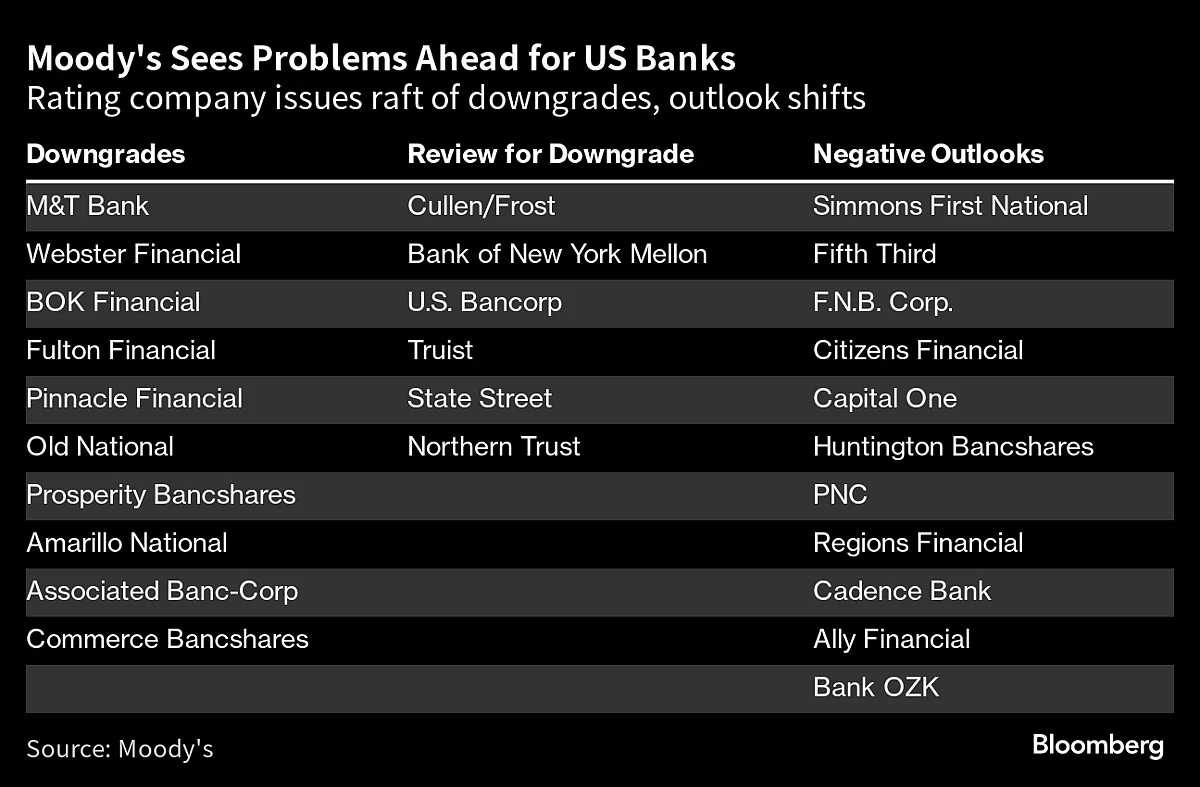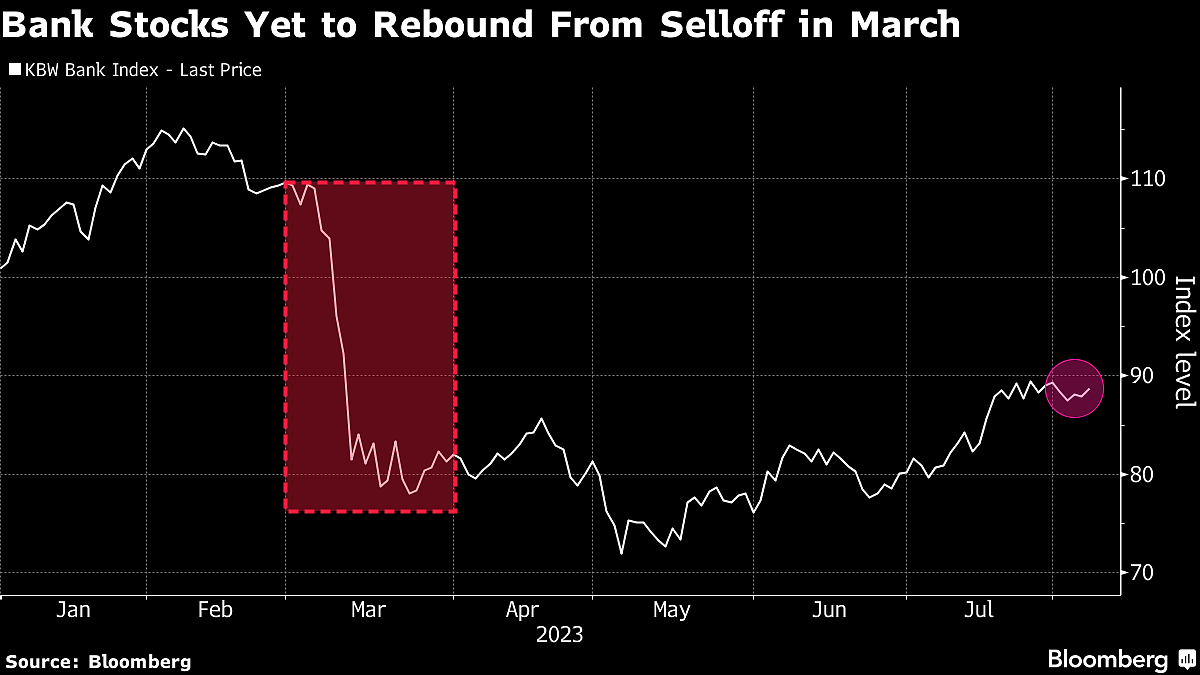Moody’s Cuts Ratings Of 10 U.S. Banks, Says May Downgrade Large Lenders
Higher funding costs, potential regulatory capital weaknesses and rising risks tied to commercial real estate among key strains, says the raging agency.

(Bloomberg) -- US bank stocks declined after Moody’s Investors Service lowered its ratings for 10 small and midsize lenders and said it may downgrade major firms including U.S. Bancorp, Bank of New York Mellon Corp., State Street Corp., and Truist Financial Corp.
Higher funding costs, potential regulatory capital weaknesses and rising risks tied to commercial real estate are among strains prompting the review, Moody’s said late Monday.
“Collectively, these three developments have lowered the credit profile of a number of US banks, though not all banks equally,” the rating company said.

Shares declined for firms that had their ratings cut, including M&T Bank Corp., down 4.6%, and Webster Financial Corp., which lost 3.4%. Moody’s also adopted a “negative” outlook for 11 lenders, including PNC Financial Services Group, Capital One Financial Corp. and Citizens Financial Group Inc. Among those, PNC was down 4.6% and Capital One lost 3%.
Investors, rattled by the collapse of regional banks in California and New York this year, have been watching closely for signs of stress in the industry as rising interest rates force firms to pay more for deposits and bump up the cost of funding from alternative sources. At the same time, those higher rates are eroding the value of banks’ assets and making it harder for commercial real estate borrowers to refinance their debts, potentially weakening lenders’ balance sheets.

Read More: ‘Hot Money’ Scorches Regional Bank Profits After Deposit Flight
“Rising funding costs and declining income metrics will erode profitability, the first buffer against losses,” Moody’s wrote in a separate note explaining the moves. “Asset risk is rising, in particular for small and midsize banks with large CRE exposures.”

Some banks have curbed loan growth, which preserves capital but also slows the shift in their loan mix toward higher-yielding assets, Moody’s said.
Banks that depend on more concentrated or higher levels of uninsured deposits are more exposed to these pressures, especially banks with high levels of fixed-rate securities and loans.
--With assistance from Abhishek Vishnoi.
(Updates share prices in fourth paragraph.)
More stories like this are available on bloomberg.com
©2023 Bloomberg L.P.